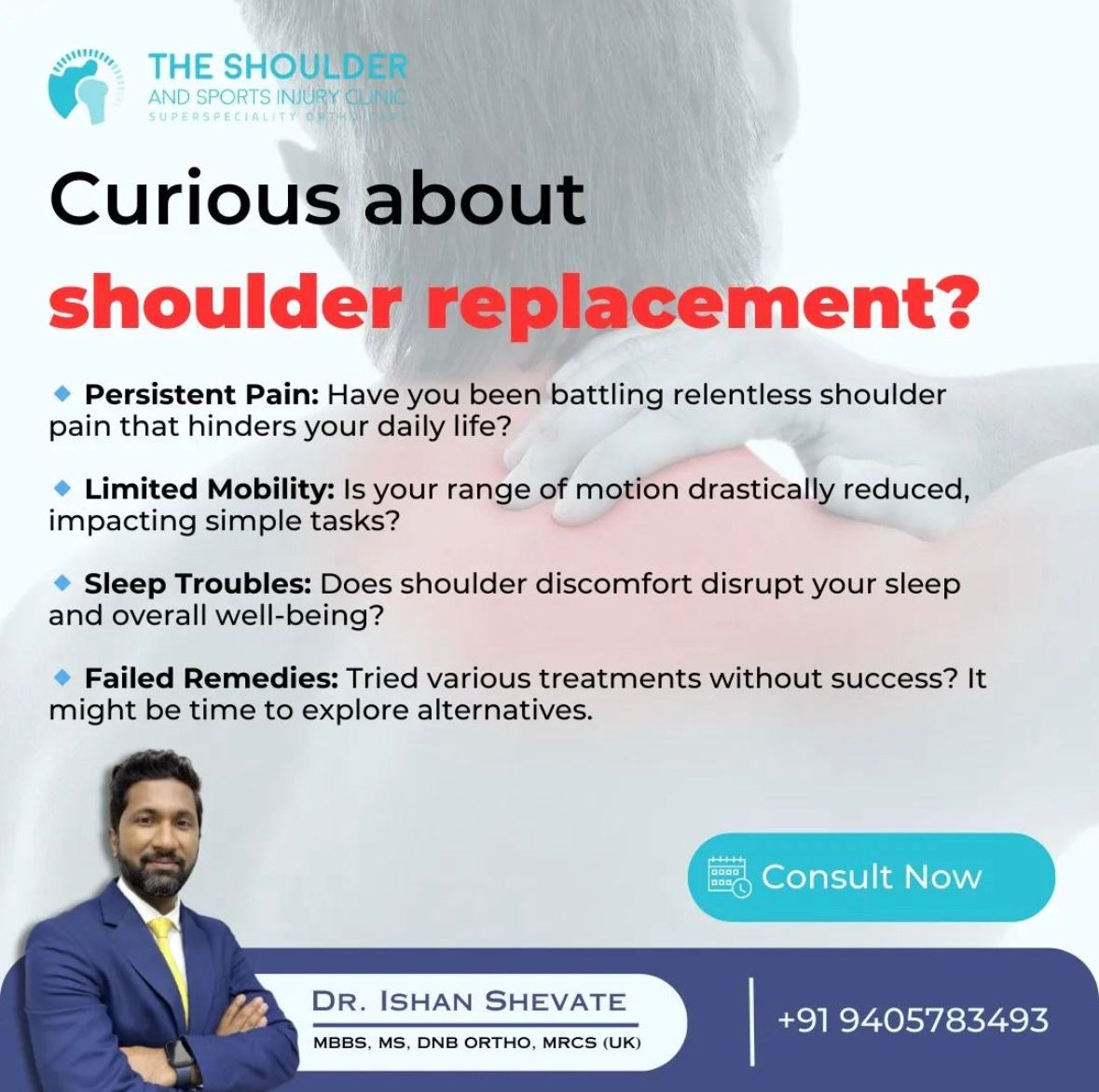+918048035598

This is your website preview.
Currently it only shows your basic business info. Start adding relevant business details such as description, images and products or services to gain your customers attention by using Boost 360 android app / iOS App / web portal.
Having shoulder pain after recent sports activi...

Having shoulder pain after recent sports activities? Introduction: Participating in sports activities can be incredibly fulfilling and beneficial for your health, but it's not uncommon to experience shoulder pain after engaging in such physical endeavors. This blog aims to help you understand why shoulder pain might occur after sports activities, explore the potential causes behind it, and provide practical solutions to alleviate the discomfort and promote a smooth recovery. Unraveling the Causes of Shoulder Pain: Shoulder pain following sports activities can arise from a variety of factors. Some common causes include: a) Acute Injuries: Intense or sudden movements during sports can lead to sprains, strains, or even dislocations of the shoulder joint. b) Overuse and Fatigue: Repeated and excessive use of the shoulder joint without adequate rest can result in overuse injuries, causing pain and inflammation. c) Rotator Cuff Issues: Sports activities involving overhead movements can strain the rotator cuff tendons, leading to pain and limited range of motion. d) Impingement: Activities that require repetitive shoulder movements can lead to impingement, where the rotator cuff tendons become compressed between bones, causing pain. Immediate Steps to Take: If you're experiencing shoulder pain after sports activities, it's important to take immediate steps to manage the discomfort and prevent further injury: a) Rest: Allow your shoulder time to rest and recover. Avoid engaging in activities that aggravate the pain. b) Ice: Applying ice to the affected area for 15-20 minutes every few hours can help reduce inflammation and ease pain. c) Compression: If applicable, using a compression bandage can help control swelling. d) Elevation: Keeping the injured shoulder elevated can minimize swelling and promote healing. Seeking Professional Guidance: If the pain persists or worsens, it's wise to seek medical advice. A healthcare professional can provide an accurate diagnosis and recommend appropriate treatment options: a) Medical Evaluation: A doctor can perform physical exams, order imaging tests like X-rays or MRI scans, and determine the exact cause of your shoulder pain. b) Physical Therapy: If needed, a physical therapist can create a personalized rehabilitation plan that includes exercises to strengthen and stabilize the shoulder. c) Medication: Depending on the severity of the pain and inflammation, your doctor might recommend over-the-counter or prescription medications. Rehabilitation and Prevention: Once you've addressed the acute pain, focus on rehabilitation and preventing future occurrences: a) Follow Medical Advice: Adhere to the treatment plan outlined by your healthcare provider or physical therapist. b) Gradual Return: When you're ready to resume sports activities, start slowly and progressively increase intensity to avoid re-injury. c) Proper Form: Ensure that you're using proper form and technique during sports activities to minimize stress on the shoulder. d) Warm-up and Stretching: Always warm up before engaging in physical activities and incorporate shoulder-specific stretches to enhance flexibility. Conclusion Experiencing shoulder pain after sports activities can be frustrating, but it's essential to approach the situation with caution and care. By understanding the potential causes of the pain, taking immediate steps for initial relief, seeking professional guidance when necessary, and focusing on rehabilitation and prevention, you can effectively manage your shoulder pain and return to your favorite sports activities in a safe and sustainable manner. Remember, your health and well-being come first, so listen to your body and prioritize its recovery.

